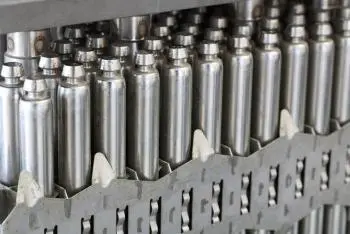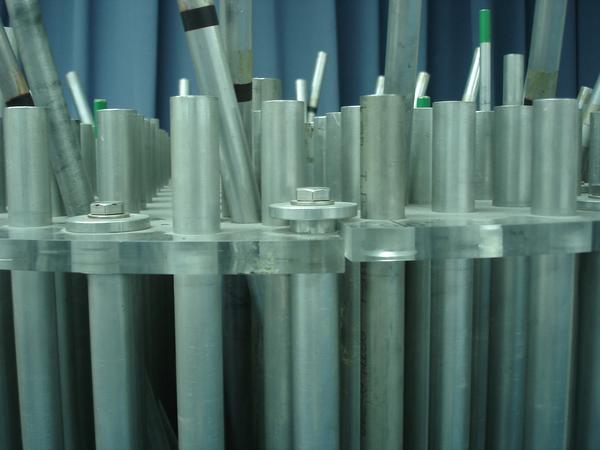
Control rods in nuclear power plants are elements that allow regulating the power of the reactor. It is an essential element in reactor safety. Without them, the reactor power would increase uncontrollably.
The nuclear reactions that take place inside a fission reactor happen in a chain. In other words, every time an atom hits a neutron, it splits and emits one or two more neutrons. Neutrons produced by each fission reaction can bump into other atoms so that more and more reactions would occur per unit of time.
Nuclear reactor control rods do a high neutron absorbing function. Control rods provide real-time control of the fission process.
Of what are control rods made?
Control rods are cylindrical tubes made of a material that absorbs neutrons such as boron carbide or alloys of silver, indium, and cadmium. Cadmium C-113 has a highly energy-dependent cross-section in the thermal energy regime.
The dimensions of the control rods are the same as those of the nuclear fuel rods.
The parts of the control rod drive mechanisms and control rod drive lines exposed to reactor coolant are made of metals that resist the corrosive action of the coolant. Three types of metals are used exclusively: stainless steels, nickel-chromium-iron alloys, and, to a limited extent, cobalt-based alloys.
What do control rods do?
In the reactor vessel, control rod assemblies allow controlling the frequency of nuclear reactions. The absorption of neutrons prevents them from fissioning more fuel elements.
The effectiveness depends on the proportion of the bars that are in contact with the reaction zone. The further into the reactor core it is, the more neutrons it will absorb, and therefore fewer reactions will occur. The more absorption cross-section, the fewer fission events.
How is the power of a nuclear reactor regulated?
The control rods are one of the mechanisms to regulate the state of a nuclear reactor. The rods are often the most crucial element in a rapid shutdown of the reactor (the so-called emergency stop or scram).
 In pressurized water reactors, the rods hang in the reactor and work as a safety system. Rises are maintained with an electromagnet, and in the event of an unforeseen loss of control power, they automatically fall into the reactor. Thus, the nuclear fission chain reaction stops.
In pressurized water reactors, the rods hang in the reactor and work as a safety system. Rises are maintained with an electromagnet, and in the event of an unforeseen loss of control power, they automatically fall into the reactor. Thus, the nuclear fission chain reaction stops.
In other reactors, such as the boiling water reactor, the rods protrude from the bottom into the reactor. To activate, they must be actively pushed into the reactor core.
The reactor control process is more complicated: the course of the reaction also depends on the temperature and cooling of the reactor and on the presence of particular debris from the fission process (which sometimes absorbs many neutrons).
When the control rods enter fully (for example, during an emergency stop), the nuclear chain reaction will stop almost immediately due to its chemical and mechanical properties. The reactor is then said to become subcritical. However, the radioactive material continues to emit heat for some time, which must continue to dissipate. Otherwise, the reactor core may collapse.
In the use of nuclear energy, the control rods are a vital security element to stop the atomic reactor in case of an alarm.
How are control rods related to nuclear accidents?
One of the significant problems with nuclear power is the possibility of nuclear accidents. Some accidents have been attributed to mismanagement or failure of the control rod. It includes the Chernobyl nuclear accident.
They can manage criticality accidents by using aqueous solutions of fissile metals with a high neutron absorption capacity.
